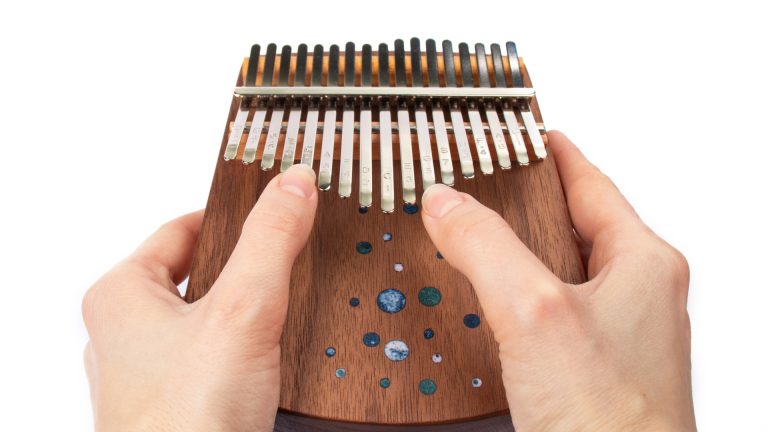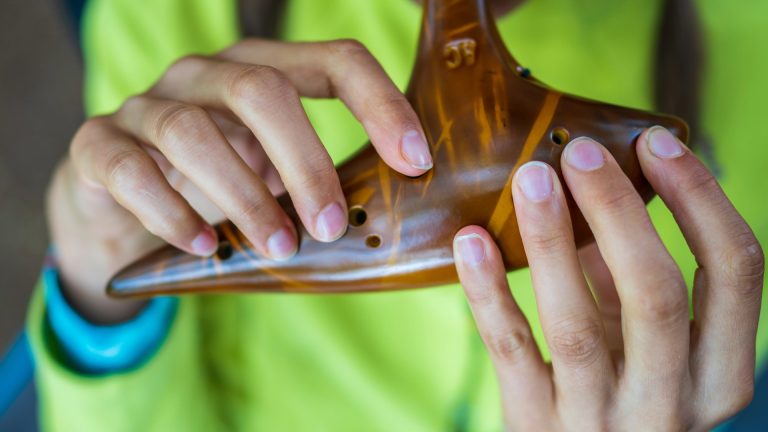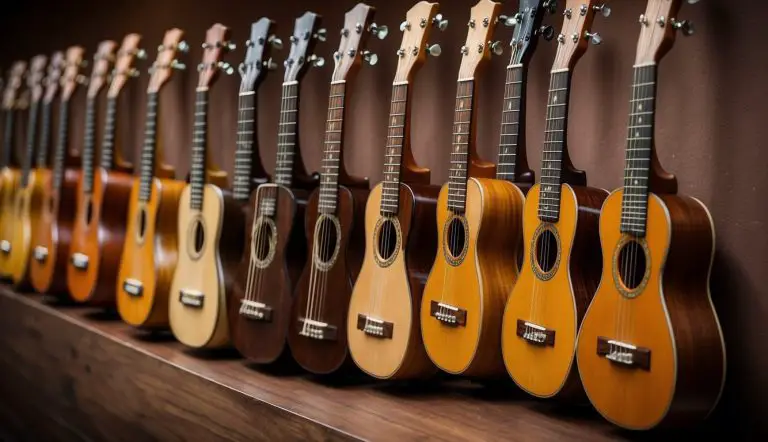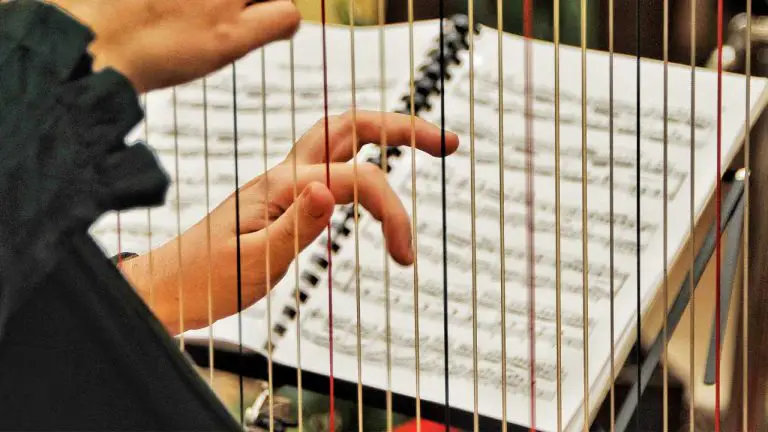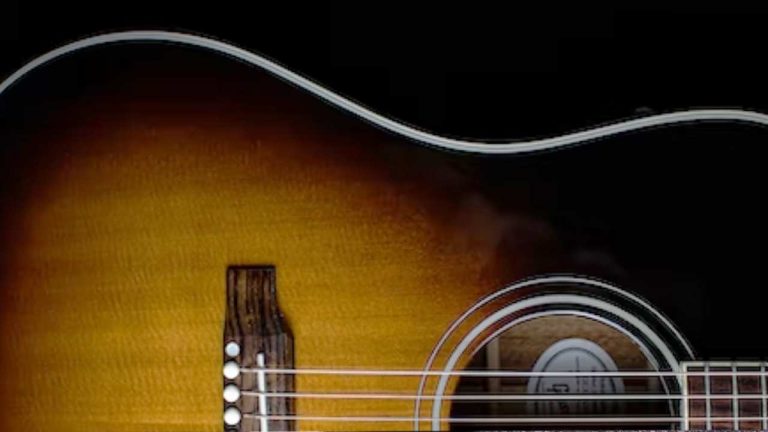What’s The Best Lyre Harp for Beginners? My Top Picks for New Musicians!
Folkstrings.com is reader-supported. When you buy through links on our site, we may earn a small commission.
Choosing the best lyre harp for beginners involves understanding the unique qualities that set these instruments apart from other harps.
Lyre harps are characterized by their compact size and the relationship between the strings and the resonant body.
These instruments are usually portable and have a varying number of strings, which can influence the complexity and range of music they can produce.
If you’re a beginner, I think it’s crucial to select a lyre harp that not only fits your budget but also feels comfortable to hold and play, allowing for a smooth learning curve.
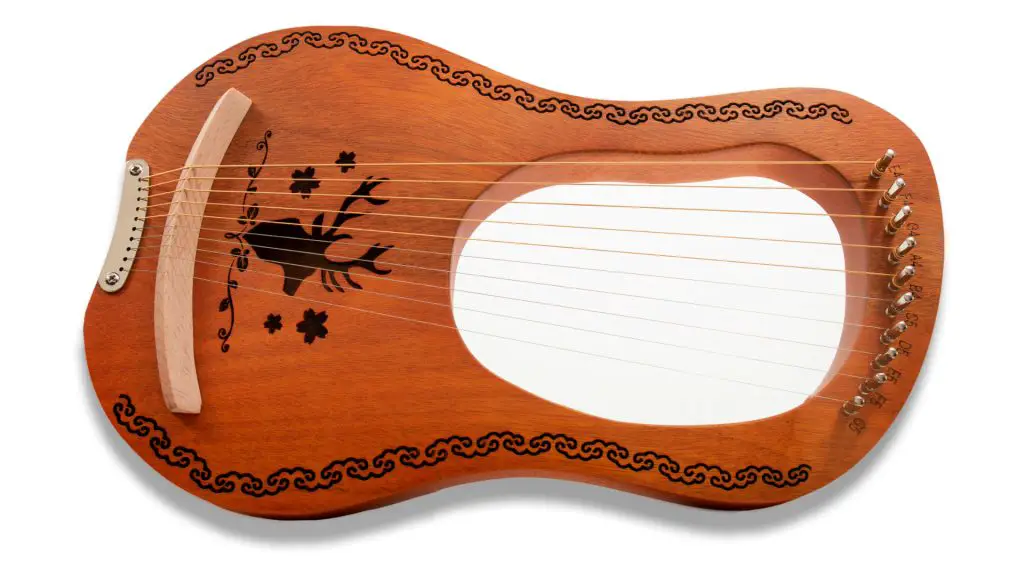
Learning to play the lyre harp can be a delightful and enriching experience. With fewer strings than a regular harp, the lyre can be less intimidating for new players, making it an ideal choice for those beginning their musical journey.
While it’s important to consider the nuances of tuning and the availability of beginner-friendly accessories, I’ve noticed that starting with a well-crafted instrument can significantly enhance the learning process.
The simplicity of the lyre allows beginners like me to focus on mastering basic techniques, before potentially progressing to more complex instruments in the future.
Key Points…
- A lyre harp’s simplicity and size make it a great choice for beginners.
- Beginners should look for a comfortable, easy-to-play lyre harp.
- The initial focus on learning should be ease of tuning and accessibility of accessories.
Table of Contents
The Best Lyre Harps for Beginners – My Recommendations
When starting out on the lyre harp, there are a few models I’d recommend for beginners due to their quality, affordability, and ease of play. Here are three options that stand out:
- Roosebeck 8-String Lyre Harp
- Material: Beechwood
- Strings: Steel
- Price Range: Affordable
- Good for: Those who prefer a lightweight option with a clear, gentle sound.
The Roosebeck 8-String Lyre Harp is small and manageable, suitable for beginners who are just getting familiar with the instrument.
- AKLOT 16-String Lyre Harp
- Material: Solid Mahogany
- Strings: Steel
- Price Range: Mid-range
- Good for: Beginners looking for a wider range of notes to play more complex tunes as they progress.
AKLOT’s 16-String Lyre Harp offers a robust build and a fuller sound, great for those who wish to quickly move beyond the basics.
- Donner 10-String Lyre Harp
- Material: Mahogany
- Strings: Steel
- Price Range: Affordable
- Good for: Beginners who want a balance between the Roosebeck’s portability and AKLOT’s range.
The Donner 10-String Lyre Harp sits nicely between the smaller 8-string Roosebeck and the larger 16-string AKLOT, making it versatile for beginners.
It’s important for me to mention that as a beginner, you should look for a lyre harp that feels comfortable in your hands and resonates with you musically.
Some beginners might favor a smaller, lighter harp for portability, while others might want a harp that will stay in tune longer and provide a fuller sound.
All the mentioned brands are reputable and provide quality instruments that are accessible for beginners both in playability and price.
Choosing the Right Lyre Harp
When picking out a lyre harp for beginners, I believe it’s essential to consider the instrument’s design, quality, and materials, which can greatly impact your learning experience.
Understanding the Basics
In my experience, a lyre harp is a stringed instrument known for its simplicity and beauty in design. Beginners often start with fewer strings as they are easier to learn and manage.
Typically, a good beginner lyre harp can have anywhere from 7 to 16 strings, but I find that starting off with a 10-string lyre harp can provide a good balance for learning basic techniques without becoming overwhelming.
Types of Lyre Harps
Various types of lyre harps are available, differing mainly in the number of strings and overall size. A 7-string lyre is considered very basic, suitable for the youngest beginners or those who are curious about the instrument.
An 8-string offers a slightly wider range, while the 10-string expands the musical possibilities without being too complex. For more ambitious beginners, a 16-string lyre harp like the Aklot Lyre Harp offers a broader range of notes to explore music more fully.
Material and Craftsmanship
Material wise, it’s hard to beat the warmth of a mahogany lyre harp for its sound quality and aesthetics. The craftsmanship, particularly in the smoothness of the wood and finishing touches, can significantly affect the price.
It is possible to find a quality beginner’s lyre harp that is affordable, but always ensure that it’s well-made to avoid frequent tuning or playing issues.
Number of Strings and Tuning
The tuning process will differ based on the number of strings and the type of keys used.
I recommend looking for lyre harps with carbon steel keys, which keep tuning more stable, especially for beginners.
The strings themselves can also vary in material, and I’ve found that Dupont hard nylon strings tend to be durable and provide a clear, rich tone. For a beginner, here’s a quick reference on number of strings:
| Number of Strings | Easier Tuning | Broader Range |
|---|---|---|
| 7 strings | ✔️ | |
| 8 strings | ✔️ | |
| 10 strings | ✔️ | |
| 16 strings | ✔️ |
Always match your choice with your comfort level and interest in learning the instrument.
Difference Between Lyre and Regular Harp
When choosing a beginner lyre harp, understanding the distinctions between a lyre and a regular harp is crucial. Both are stringed instruments but have key differences.
Structure: My lyre typically has a U-shape, resembling a small harp but with a simpler and more archaic design. It has strings attached to a crossbar that stretch over a resonating body. In contrast, a regular harp, particularly the modern orchestral kind, features a large frame with a soundboard, and the strings are perpendicular to the soundboard.
Size and Portability: I find my lyre to be much more portable due to its smaller size. Harps, on the other hand, can range from small lever harps to large floor-standing pedal harps, with the latter being less portable due to their size and complexity.
| Lyre | Regular Harp | |
|---|---|---|
| Shape | U-shaped | Angular frame |
| Size | Smaller | Ranges from small to large |
| Portability | High | Varies |
String Arrangement and Tuning: The number of strings on my lyre can vary, commonly from 7 to 10, whereas regular harps have a broader range, from about 22 to 47 strings, depending on the type.
My lyre is straightforward to tune, which is ideal for beginners. Regular harps are equipped with levers or pedals to aid in tuning and playing semi-tones, allowing for more complex performance but also requiring more skill to manage.
Playing Technique: Playing my lyre involves plucking the strings with fingers or a plectrum, and I hold it with one hand while I play. Regular harps require both hands and often involve more intricate hand positions and playing techniques.
As a beginner, I appreciate the lyre for its ease of learning and the gentle, melodic sound it produces. If you’re starting out, a lyre could be an excellent choice to step into the world of stringed instruments.
Learning to Play the Lyre Harp
I find the journey of learning to play the lyre harp immensely fulfilling. It’s a process that marries simple techniques with beautiful melodies, making practice sessions enjoyable as I witness my own progress.
Is the Lyre Harp Easy to Learn
Yes, the lyre harp is considered one of the more approachable instruments for beginners like myself. With its small size and fewer strings compared to other harps, I quickly got familiar with the layout of the strings and how they correlate to musical notes.
This simplicity allows me to rapidly learn the basics and start producing music.
Techniques: Plucking and Strumming
Mastering the fundamental techniques of plucking and strumming is essential. Here’s how I approach both:
- Plucking: I use my fingertips or a plectrum to gently pull and release the strings. This technique allows for clear and melodic notes to resonate.
- Tip: I keep my nails short to avoid unwanted sounds.
- Strumming: Strumming creates a more textured sound. I move my hand in a smooth motion across the strings, either with my fingers or a pick.
- Tip: To achieve different sounds, I experiment with strumming at varying speeds and intensities.
Simple Tunes for Practice
Starting with simple tunes allows me to build a solid foundation before tackling more complex pieces. Here are a few tips I follow when selecting tunes:
- Melodies: I choose melodies with repeating patterns which make them easier to memorize.
- Chords: Simple chords form the backbone of many tunes, helping me learn chord progressions which are key for song structure.
By focusing on easy-to-learn tunes and straightforward techniques, my practice time is always productive and joyous.
Tuning Your Lyre Harp
When I first started playing the lyre harp, I learned that keeping it well-tuned is crucial for the best sound. I’ll guide you through the tools you’ll need, maintaining the tune, and adjusting for different musical styles.
Tuning Tools and Accessories
First things first, you’ll need a tuning wrench, which typically comes with your lyre harp. This little tool is essential for turning the tuning pegs to get each string to the right pitch.
It’s a good idea to keep a gig bag to protect your harp and accessories. For precision, I often use an electronic tuner or tuner app.
Having a tuning tool, such as a clip-on tuner that can detect vibrations, is incredibly helpful, especially in noisy environments.
Maintaining Proper Tune
To maintain the tune of your lyre harp, check the tuning each time before you play. Strings can stretch and contract with changes in temperature and humidity, so it’s a regular task. Here’s a quick checklist:
- Step 1: Turn the tuning wrench gently – force can damage the strings or pegs.
- Step 2: Use the electronic tuner to check each string’s pitch. Start with the lowest note and work your way up.
- Step 3: Repeat the process until the strings stay in tune, as they may slightly adjust after you’ve tuned adjacent strings.
Remember, newly strung lyre harps often require more frequent tuning until the strings have fully stretched.
Tuning for Different Music Styles
Depending on what style of music you’re playing, you might need to adjust your lyre harp’s tuning.
For classical pieces, standard tuning is usually what you’re after. If you’re keen on folk music or enjoy a more historical repertoire, you might be tuning to a pentatonic scale which gives a different feel and sound. It’s generally more accessible for beginners, too. Here’s how you might tune to a pentatonic scale in ‘C’:
- C: Do (1) – the root of the scale
- D: Re (2) – skip this for a pentatonic scale
- E: Mi (3)
- F: Fa (4) – skip this for a pentatonic scale
- G: So (5)
- A: La (6)
- B: Ti (7) – skip this for a pentatonic scale
- C: Do (8) – the octave
When I play, I often switch between different scales to match the mood and style of the piece I’m working on. With a bit of practice, you’ll find it becomes a quick and easy process!
Accessories and Maintenance
Before you start your journey with your new lyre harp, I want to underline the importance of having the right accessories and maintaining your instrument to ensure the best quality and longevity of play.
Essential Accessories
Starting with the essentials, I always make sure I have a gig bag and a tuning tool.
The gig bag is crucial for protecting your lyre harp from dust and damage. I recommend getting one with padding for additional safety during transport.
The tuning tool, on the other hand, is an indispensable accessory for keeping your lyre harp sounding just right.
Tuning Tool:
- Purpose: Keeps your lyre harp in perfect pitch.
- Tips: Regular tuning before playing ensures consistent sound quality.
Gig Bag:
- Purpose: Protects your lyre harp from wear and tear.
- Materials: Choose a durable fabric with padding.
Caring for Your Lyre Harp
Maintenance is key to preserving the pristine condition of your harp.
I take pride in regularly checking the soundboard and resonator box for any signs of damage or wear. It’s the combination of these two that affects the quality of sound your lyre harp produces.
For the soundboard, which is integral for sound projection, you should check for cracks, while the resonator box should be free from any blockages that might dampen the sound.
- Soundboard: Inspect for cracks; clean gently.
- Resonator Box: Ensure it’s unobstructed; handle with care.
Consistent cleaning and careful handling can prolong the life of both these parts, and in turn, the beautiful music your lyre harp creates.
Conclusion
I’ve explored various lyre harps tailored for beginners. In my journey, I found that beginner-friendly instruments must balance playability, affordability, and quality. I’ve seen the harps’ sizes and materials can affect the learning curve and my personal enjoyment.
- Playability: I prioritize harps with comfortable string spacing and tension. It’s easier on my fingers and encourages daily practice.
- Material Quality: A well-crafted wooden body, often maple or spruce, has proven to be durable and produces a wholesome sound.
- Size: A smaller harp is portable, which is ideal for beginners like myself who may want to share my music with others or practice anywhere.
I also considered my growing musical skills. Starting with a simpler, diatonic lyre harp allows me to focus on the basics before moving to more complex instruments.
This approach has helped me build confidence for performances, whether for a small gathering or a larger audience.
My top picks for beginners have clear, resonant tones and a reliable build—qualities that enhance learning and fuel my passion for music.
I’ve learned that a well-chosen lyre harp is not just an instrument; it’s a companion on my musical adventure, which, so far, has been rewarding and joyous.
Frequently Asked Questions
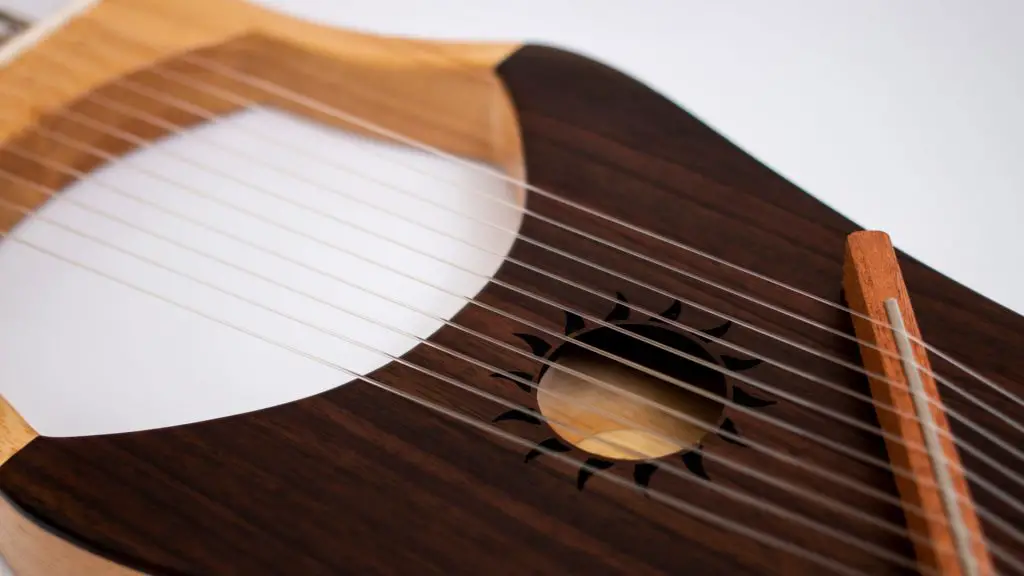
In this section, I’ve gathered some common questions that newcomers to the lyre harp might have. From the number of strings to choosing a brand, I hope these answers will help you get started on your musical journey.
What is the recommended number of strings for a beginner’s lyre harp?
For beginners, a lyre harp with 7 to 10 strings is often recommended. It’s enough to play a wide range of music and not too overwhelming.
What features should I look for when choosing a lyre harp as a new player?
Look for a lyre harp with comfortable string spacing and tension that suits your fingers.
Also, a tuning tool should be included, and lightweight construction can enhance portability.
What are the differences between a lyre harp and a regular harp for someone just starting?
A lyre harp typically has fewer strings and is more portable than a regular harp, making it manageable for beginners. In contrast, regular harps have a framework and can be more complex to play.
Can I teach myself to play the lyre harp, and what resources are available?
Yes, you can teach yourself using online tutorials, books like “You Can Teach Yourself Lever Harp”, and free resources available from harp communities.
How does a lyre harp’s string count affect playability for newcomers?
A higher string count equates to a wider tonal range, which can be complex for newcomers.
On the other hand, fewer strings mean simpler tuning and easier learning.
Are there specific lyre harp brands recommended for beginners?
Brands like Roosebeck and AKLOT are known for producing beginner-friendly lyre harps, offering quality craftsmanship at an affordable price point.
Author Profile
-
Daniel Johnstone is an English writer with a love for stringed instruments from around the world.
He shares his love for these instruments through his writing for folkstrings.com, a website dedicated to all things related to folk string music.
Daniel's passion for music started at a young age, and he has since become an accomplished musician, playing guitar, cavaco, and recently, the harp.
His dedication to learning and sharing his knowledge of stringed instruments is evident in his insightful and engaging blog posts. Whether you're a seasoned musician or a beginner, Daniel's writing is sure to inspire and entertain you.
When he's not playing music or writing, you can find Daniel exploring new instruments and seeking out new sounds to share with his readers.
Latest entries
 AutoharpApril 4, 2024What Is the Autoharp Made Of: Exploring Its Materials and Craftsmanship
AutoharpApril 4, 2024What Is the Autoharp Made Of: Exploring Its Materials and Craftsmanship AutoharpApril 4, 2024Is Autoharp Easy to Play? Unveiling the Truth for Beginners
AutoharpApril 4, 2024Is Autoharp Easy to Play? Unveiling the Truth for Beginners AutoharpApril 4, 2024What Is an Autoharp Worth? Your Guide to Pricing and Value
AutoharpApril 4, 2024What Is an Autoharp Worth? Your Guide to Pricing and Value AutoharpApril 4, 2024Are Autoharp and Zither the Same Thing? Unraveling String Instrument Myths
AutoharpApril 4, 2024Are Autoharp and Zither the Same Thing? Unraveling String Instrument Myths
Affiliates:
This post may contain affiliate links that at no additional cost to you, the site may earn a small commission. We only recommend products we would use ourselves and all opinions expressed on this site are our own.
Accuracy Advice:
While we strive to provide up-to-date and accurate information, the content in this article may not reflect the most current research or medical guidelines. We encourage readers to do further research and consult with professionals for more personalized advice.
Our Recommendations:
The products and services mentioned in any of our articles are recommended based on our independent research and personal experience. We are not sponsored by any company. We aim to suggest products and services we believe are of high quality and could be beneficial to our readers.


